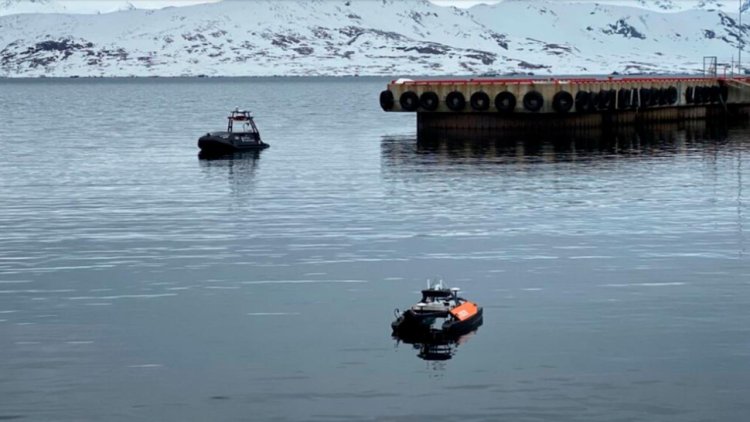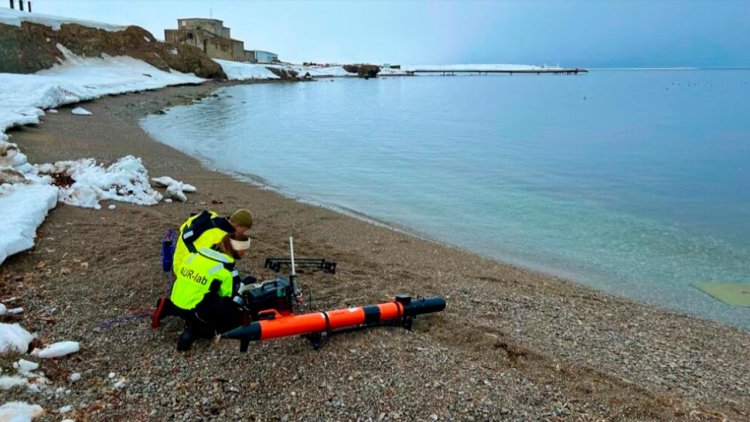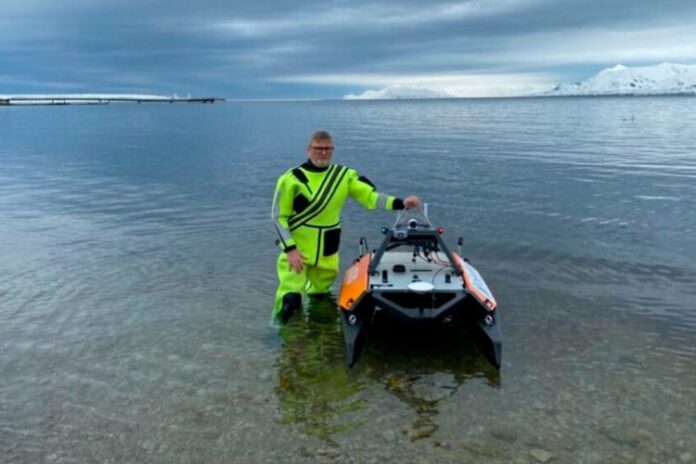In late May, NTNU researchers and students used a small satellite, an unmanned aerial vehicle, two unmanned boats and subsea robots to survey the same area simultaneously. This is an approach called an observational pyramid.
The Arctic is both an interesting and important area from which to observe climate change. At this latitude, temperature and ecosystem changes are evident sooner and clearer than in more temperate areas. For Professor Geir Johnsen, one of the critical questions to ask — and answer — is what is happening to phytoplankton, which form the base of the food web.
The approach the researchers have used, the observational pyramid, can be used to survey normal and harmful algal blooms and the kinds of changes global warming is causing in the ocean in a more continuous way.
Asgeir J. Sørensen, a professor of marine cybernetics and Director of NTNU AMOS, says:
“This concept can be developed and streamlined, especially when it comes to faster data interpretation. We have worked with biologists to customize this approach, according to what they need, but it can be used for other purposes as well.”
One driver for this development is the long collaboration with Equinor to develop methods and technologies to monitor the offshore oil and gas environment, as well as offshore renewable energy systems.

Sørensen pointed out that the aquaculture industry can also benefit from more effective and automated ways of monitoring and surveying fish welfare conditions, and the environment near the fish pens.
This technology can also be used to learn more about freshwater systems in Norway, such as the national efforts to monitor the environmental health of Mjøsa Lake, Norway’s largest.
Imagine an automated coast guard beneath the ocean surface that monitors ocean health and traffic in the ocean space. That’s essentially what this approach offers, the researchers say.
Hyperspectral maps and aerial drones combined with unmanned surface vehicles and subsea drones can be used at the same time to collect more data over a shorter time frame.

Sørensen says:
“This will give us more knowledge and a better understanding of what is going on in the ocean.”
A number of master’s students, PhD candidates and postdocs participated in the experiment.
Sørensen says:
“This could lead to new industries, value creation and new workplaces in Norway in the near future.”
The first test of the observational pyramid was done in close collaboration between the University of Tromsø and UNIS –the University Centre in Svalbard and several departments at NTNU. This research is also part of the Nansen Legacy project. Researchers from both the US and Australia came to Ny-Ålesund to see the observational pyramid in action.



